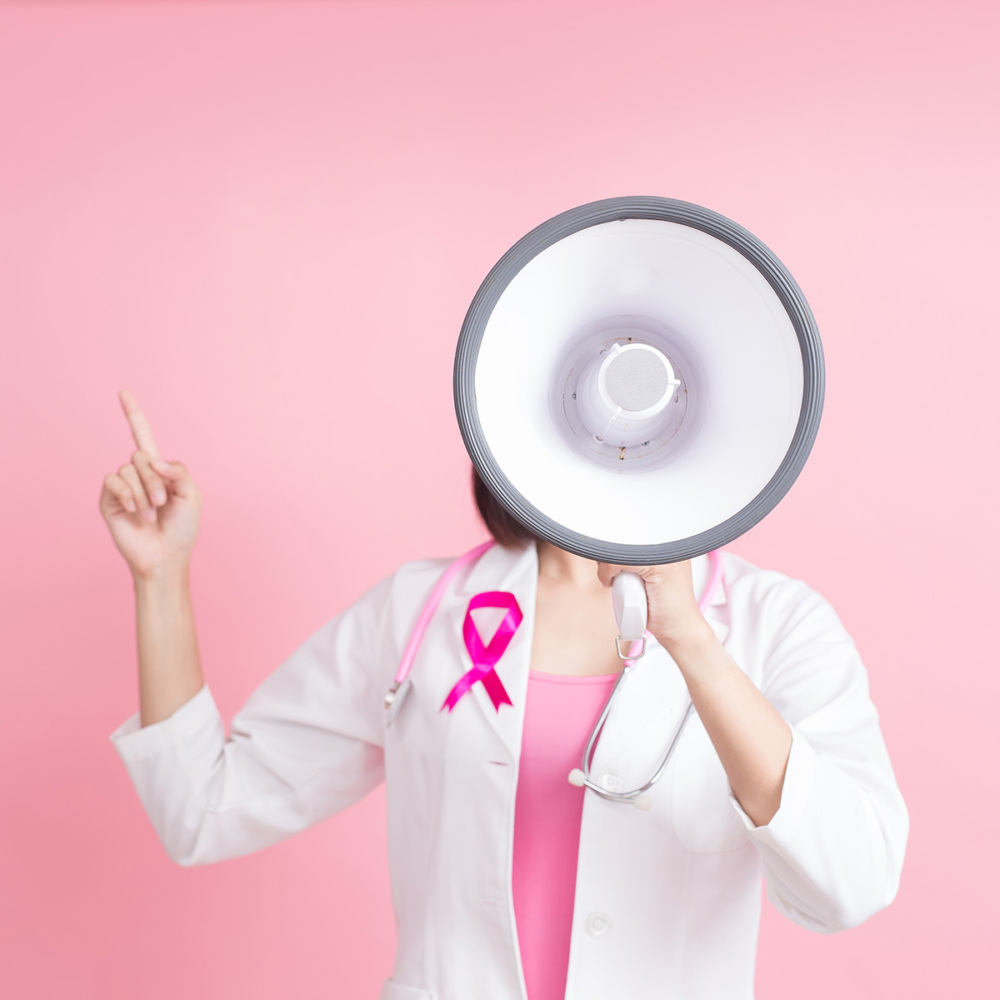1 in 10 women ages 40+ have never had a breast cancer screening

F或立即释放
凯拉·梅斯特
703-836-1746
kyra.meister@preventcancer.org
弗吉尼亚州亚历山大市 – One in 8 women will be diagnosed with breast cancer in their lifetime; however, this reality is even more startling when you consider the results of an annual survey 来自 预防癌症基金会, which shows 1 in 10 women ages 40 and older have never had a breast cancer screening.
该消息来自 2023 report from the Prevent Cancer Foundation that 65% of Americans 21 years of age and older say they are not up to date with one or more routine cancer screenings, including a third of women ages 40 and older who are behind on their breast cancer screening.1 Most people don’t experience signs or symptoms of cancer until it’s in advanced stages, but this and other findings from the Foundation’s first annual 早期检测调查 emphasize the need for education surrounding the importance of early detection. Early detection of cancer can mean less extensive treatment, more treatment options and better chances of survival.
Survey participants cite inability to afford the cost (31%), lack of symptoms (25%)2 and fear of a cancer diagnosis (22%) as top reasons for not being up to date on their breast cancer screening. Additionally, 16% of women who are not up to date on their breast cancer screening cite time as a barrier to staying up to date—saying their schedules are too busy or they cannot take time off from work.
Some of the barriers cited above are a result of social determinants of health (SDOH), or conditions in the environments where people live that impact their health, well-being and quality of life.3 SDOH significantly influence a person’s health care journey and can impact access to insurance or preventive care, like routine cancer screenings. The survey highlights how Hispanics are disproportionately impacted by these factors, with Hispanic participants reporting significantly lower rates for breast cancer screening (46%) than Black participants (61%) and white participants (63%).
While the incidence rate of breast cancer is highest among white people, studies report higher death rates among Black people, illustrating a need for continued research and action to eliminate disparities and achieve better outcomes across all populations. Breast cancer is highly curable if found in its early stages before it has spread to surrounding areas of the breast. Getting routine screenings as recommended is key to discovering better outcomes for a disease that takes the lives of more than 40,000 people in the U.S. every year.
“We have come a long way in being able to find breast cancers early to achieve better outcomes, but in order to take advantage of improved technologies and treatments, we need women to get breast cancer screenings,” said Jody Hoyos, CEO of the Prevent Cancer Foundation. “By understanding the problem—the real reasons people aren’t going to the doctor—and working to address the issues identified, we can increase screening rates and empower people to stay ahead of cancer.”
People of average risk4 should follow these screening guidelines:
From ages 25 to 39: Three-year check-up
Talk with your health care provider at least once every three years for risk assessment, risk reduction counseling and a clinical breast exam.
Beginning at age 40: Annual check-up and 2D OR 3D screening mammogram (breast tomosynthesis)
See your health care provider for risk assessment, risk reduction counseling and a clinical breast exam. Get your screening mammogram annually if you are at average risk. Discuss the benefits and risks of screening tests with your health care provider and talk about which screening method is right for you.
Menopause: Hormone replacement therapy
与您的医疗保健提供者讨论与激素替代疗法相关的乳腺癌风险。
If you are at high risk, talk with your health care provider about beginning annual screening mammograms and magnetic resonance imaging (MRI) at a younger age and/or getting screened more often.
1本次调查研究的癌症筛查包括乳腺癌、宫颈癌、结直肠癌、口腔癌、肺癌、前列腺癌、皮肤癌和睾丸癌。
2Routine screening based on guidelines is recommended for people of average risk, even when there are no signs or symptoms of cancer. Symptoms often do not appear until cancer is in 先进的 stages.
3https://health.gov/healthypeople/priority-areas/social-determinants-health
4https://www.nccn.org/guidelines/guidelines-detail?category=2&id=1421
###
关于预防癌症基金会®
预防癌症基金会® 是 唯一的美国-基于 非盈利机构 独自 投入的 到 癌症 预防和早期 检测. 通过研究、教育、 外展 和倡导, 我们已经帮助无数人避免癌症诊断或及早发现癌症并得到成功治疗。 我们受到 一个可以预防癌症的世界的愿景, 可检测 并且可击败 对全部.
基金会正努力应对到 2035 年减少 40% 癌症死亡人数的挑战。为了实现这一目标, 我们是 承诺投资 $2000 万美元用于创新技术,以尽早发现癌症并推进 多-癌症筛查,$1000万美元用于扩大癌症筛查和疫苗接种覆盖面 医学上 服务不足的社区,并投入 $10 万美元用于教育公众了解筛查和疫苗接种选择。
如需了解更多信息,请访问 www.preventcancer.org.